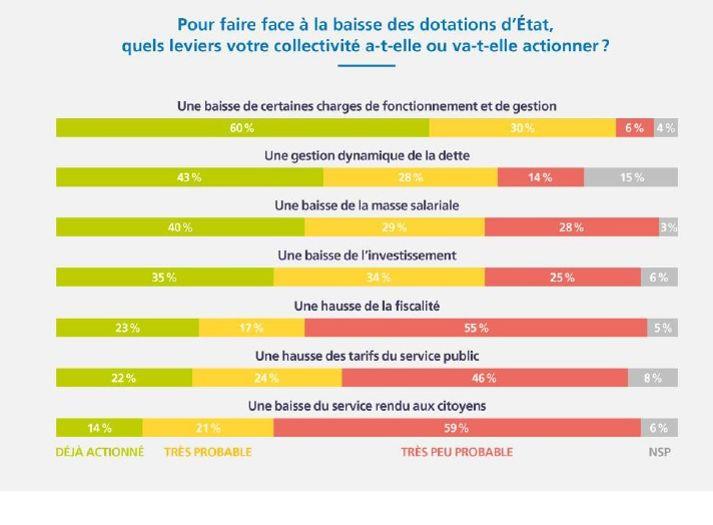According to a survey Randstad, nearly one out of two is considering a cut in its workforce to cope with the decline of the endowments of the State. Never seen that before.
The coming months promise to be complicated on the job front in the local authorities (communes, departments, regions). According to a study by Randstad published on Monday, near a local community in two (44%) intends to reduce its workforce, compared to only one in four (26%) in 2015. Only 13% expect an increase. Since the publication of the first barometer in 2012, “the proportion of communities are anticipating a decline in their numbers had been so important,” say the authors of this survey was carried out between April and June of last year.
in practical terms, nearly two-thirds of them (62%) will opt for the non-replacement of retirements, in front of the non-renewal of the contracts of some contractors (22%), and the transfer of personnel in the framework of a pooling (8%).
almost all local authorities surveyed (90%) point the finger at the cumulative reduction of the envelope of staffing overall functioning (DGF), which are expected to reach € 28 billion by 2017. Local communities are 60% have already reduced their operating expenses in 2016 (personnel expenses, purchases of supplies, allowances of the elected representatives…), while 30% plan to do so by the end of the year. But 55% believe that enable the fiscal leverage is “very unlikely” while only 40% were already using or intend to do so by the end of 2016.

Source: Randstad
Remains the position of human resources and recruiting. The communities are 89% believe that the control of the wage bill is a priority. “The investment is therefore clearly no longer the only variable of adjustment,” says Aline Crépin, director of public sector group Randstad France, quoted in the study.
Play on the numbers is precisely one of the main recommendations made by the Court of Auditors. In a report published last Tuesday, the latter showed a good resistance of the local government accounts in 2015 despite the drop in endowments, thanks to the tax revenue dynamics. But it believed that the margins tax were now “limited”. Hence the need to address the work of the agents. In addition to reducing headcount, the Sages of the rue Cambon call the authorities to reduce sick leave, increase working time and the fight against absenteeism.
A social climate morose
According to the survey conducted by Randstad, 52% of the communes concerned by degradation of their social climate. A proportion in the strong growth year on year (+ 9 points). This “gloom” is particularly important within large municipalities (over 50,000 inhabitants), where it reached 62%, representing an increase of 23 points over one year. Small communes (below 5000 inhabitants) are 43% to make the same observation (+5 percentage points year on year). The common medium-sized (5000 to 15,000 inhabitants) are, in contrast, are less likely to see a degradation of the social environment (47% versus 58%). The reforms of the territorial and the uncertainty they generate explain some of these results, according to the study.
No comments:
Post a Comment